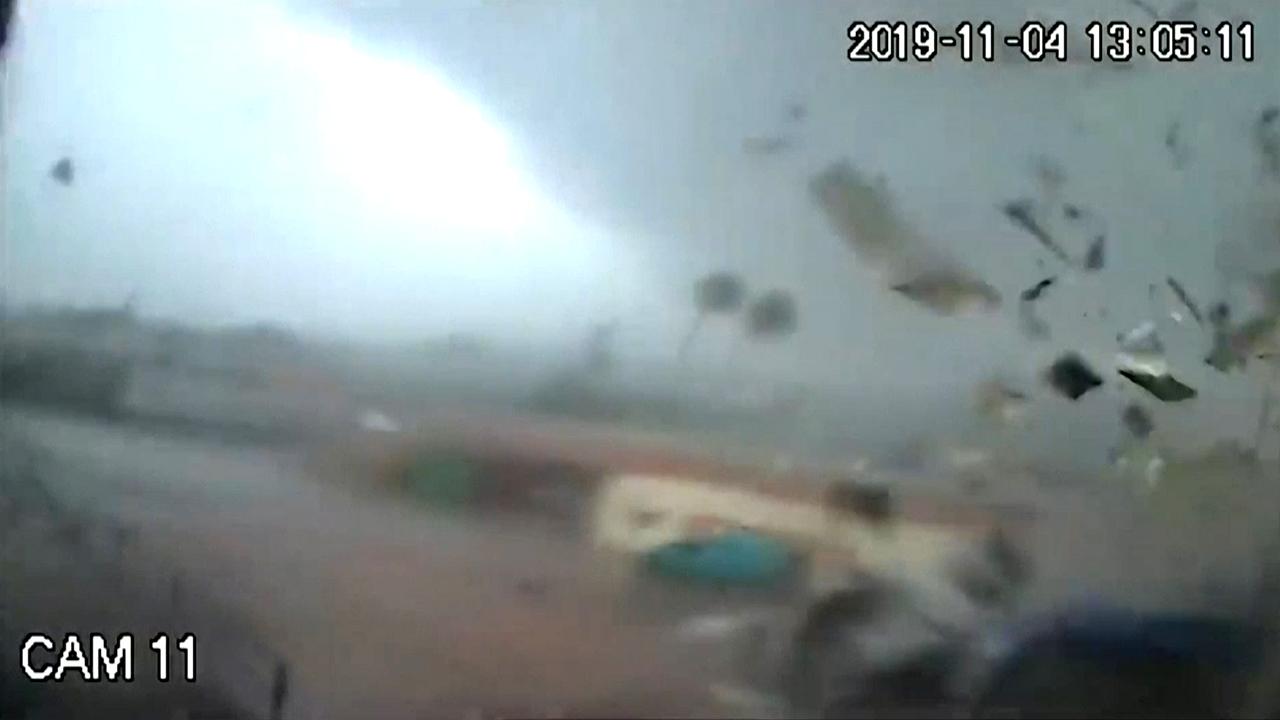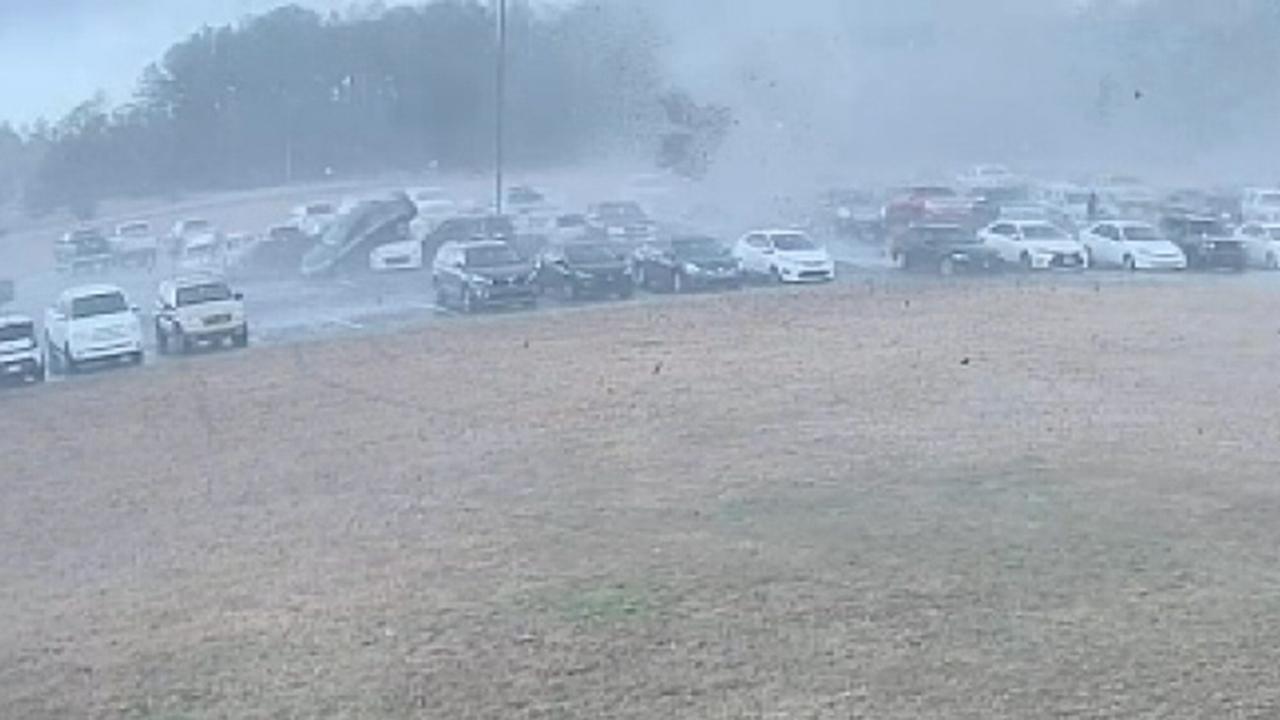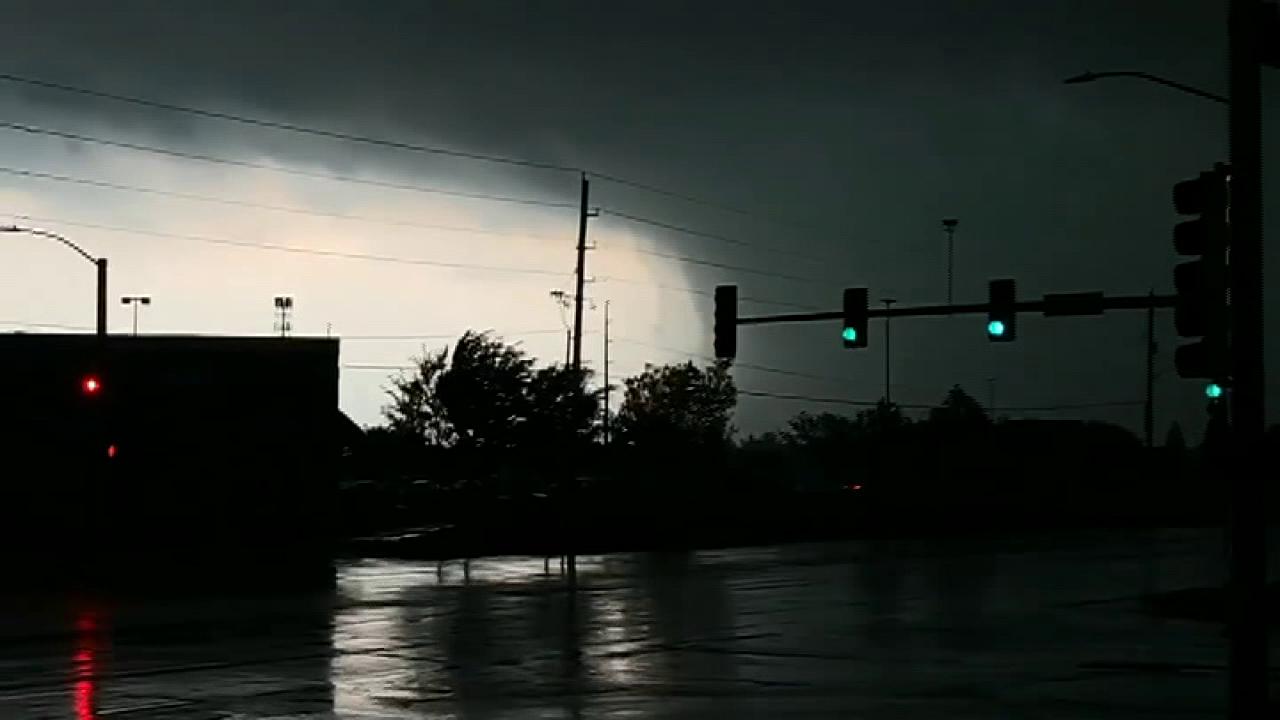Blown Away: Wild video of first-hand tornado experiences
Many people have risked their lives to capture video of tornadoes. Here is a look at some of the most incredible footage captured of tornadoes over the past few years.
Born from thunderstorms, tornadoes can cause immense devastation as they rip apart homes and toss cars like toys.
Tornadoes can happen any time of the year if conditions are right, but there are distinct seasons for twisters in different parts of the county, according to the National Oceanic and Atmospheric Administration's Storm Prediction Center.
"There is a general northward shift in "tornado season" in the U. S. from late winter through midsummer," the SPC says. "The peak period for tornadoes in the Southern Plains, for example, is during May into early June. On the Gulf Coast, it is earlier during the spring; in the Northern Plains and upper Midwest, it is June or July."
WHAT WAS THE DEADLIEST TORNADO IN THE US? HERE ARE THE 10 WORST ON RECORD
On average, tornadoes kill about 60 people per year, mostly from flying or falling debris. The actual number can vary from single digits to hundreds, depending on both "weather and society" at the time, according to the SPC.
Read on for a look at why tornadoes occur and what to do if you’re caught in one.
What is a tornado?
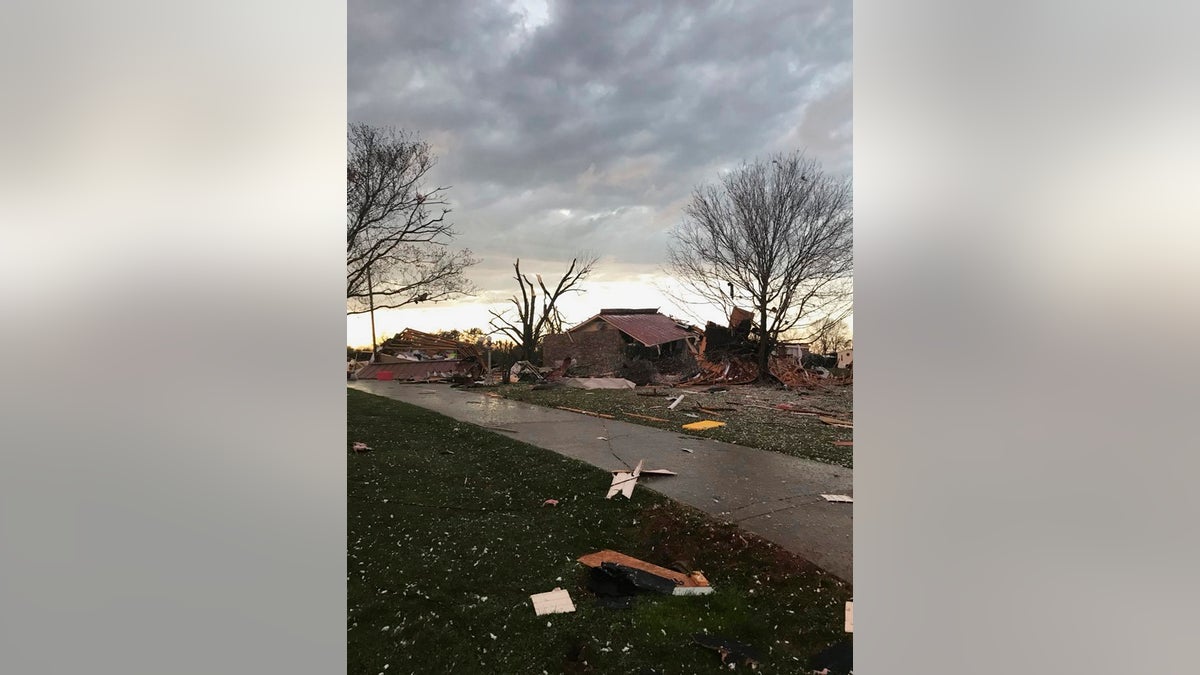
A home after a tornado passed through part of Alabama earlier this week. (AP)
Essentially, a tornado is a column of “rapidly rotating air that comes from a powerful, towering thunderstorm” also known as a supercell, Janice Dean, Fox News’ Senior Meteorologist, says.
The column of air typically forms from the supercell, stretching down and eventually reaching the ground below. When this happens, the column takes the shape of a funnel — also known as a funnel cloud, according to the Ready Campaign, a national public service campaign that helps Americans respond to natural and man-made disasters, among other things.
When do tornadoes typically occur?
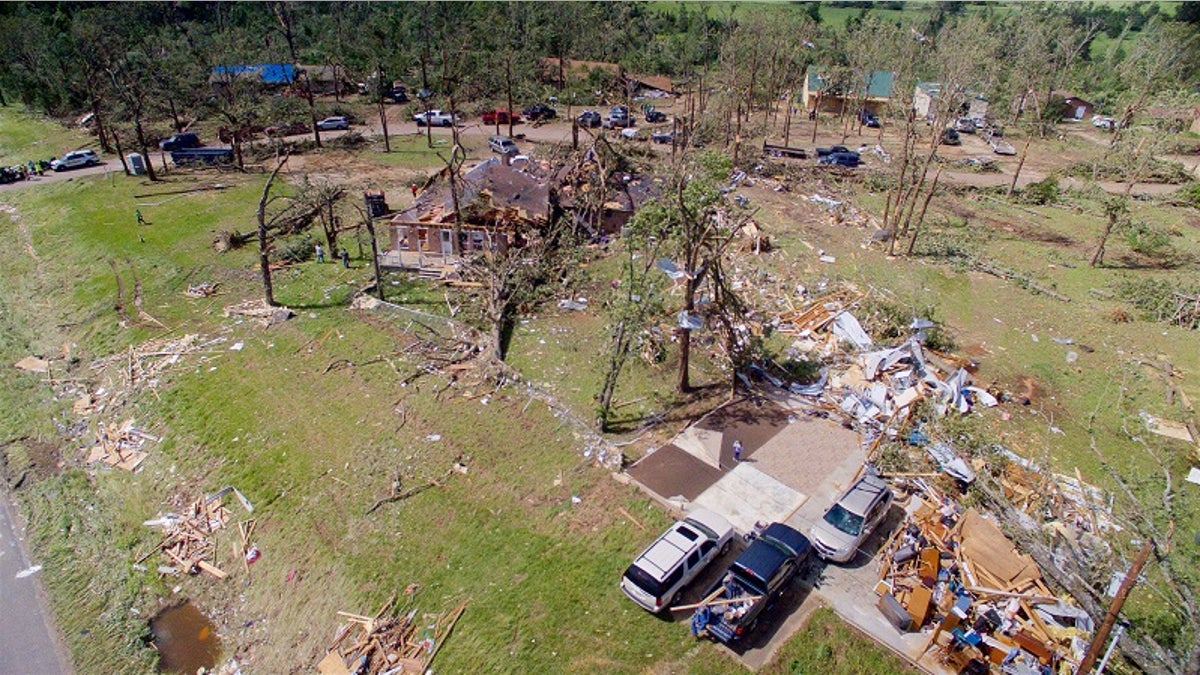
Homes are severely damaged after a tornado hit the town of Emory, Texas, on April 30, 2017. (Reuters/ Brandon Wade)
"Peak tornado" season hits the South in March and ends around May, the Virginia Department of Transportation says on its website. The severe weather pattern usually makes its way north, with the majority of tornadoes hitting northern states over the summer.
However, tornadoes tend to hit the Gulf Coast earlier during the spring, NOAA explains on its website.
"But, remember, tornadoes can happen at any time of year. Tornadoes can also happen at any time of day or night, but most tornadoes occur between 4 to 9 p.m.," the NOAA warns.
LAKE EFFECT SNOW: HERE'S HOW IT IMPACTS THE GREAT LAKES
Tornadoes are more likely to pop up around the spring and fall, "when warm moist air from the Gulf of Mexico pushes into a colder air mass from Canada," Dean explained. "Large thunderstorms often form when these air masses collide and a whirling, rotating funnel-shaped column of air can form inside these storms and then connect with the ground."
Why do tornadoes occur and how do they form?

A man stands atop a smashed car in a tornado-ravaged neighborhood south of Oklahoma City. The F5 tornado killed some 44 people in May 1999. (Reuters)
Most tornadoes form from supercells, also known as a rotating thunderstorm or a mesocyclone.
A supercell is typically a thunderstorm with the “winds already in motion,” according to National Geographic. It requires a combination of warm, moist air and cold, dry air — which are considered the ingredients for a regular thunderstorm.
To put it simply, warm, moist air near the earth’s surface begins to rise, blowing in one direction at one speed. Subsequently, the cold air above is blowing in a different direction at a different speed. This creates a wind shear, which causes the air to rotate in a column. From here, if the air column gets caught in the updraft of a supercell, it causes the air to spin faster and create a funnel shape. The funnel of air becomes a tornado as it extends toward the earth and reaches the ground below.
It’s worth noting, however, that supercells are relatively rare. According to the National Weather Service (NWS), supercells are the least common type of thunderstorm.” Roughly one in a thousand storms become supercells. From there, only one in about six of those supercells will become a tornado, National Geographic reports.
LIGHTNING SAFETY: WHAT YOU NEED TO KNOW
But if they do form, “they have a high propensity to produce severe weather, including damaging winds, very large hail, and sometimes weak to violent tornadoes,” according to the NWS.
Tornadoes are also unpredictable.
While tornadoes are "spawned by strong thunderstorms, not all strong thunderstorms end up predicting tornadoes," Dean said.
Weather forecasters can't predict which storms will produce tornadoes with 100 percent certainty, but they "can forecast where supercell thunderstorms are likely to develop," Dean explained.
Where do tornadoes typically hit?
While tornadoes can form almost anywhere given the right conditions, they commonly touch down in Florida and an area of the U.S. called “Tornado Alley.”
Tornado Alley, according to the National Centers for Environmental Information (NCEI), is a “nickname given to an area in the southern plains of the central U.S. that consistently experiences a high frequency of tornadoes each year.”
Tornado Alley includes parts of central Texas, then moves into Great Plains states such as Oklahoma, Kansas, Nebraska, North Dakota and South Dakota. Parts of Iowa, Missouri, and eastern Colorado are also considered part of Tornado Alley.
Tornadoes are more likely to form in the southeast portion of the U.S. from mid-April to early May, Dr. Jeffrey Basara, an associate professor of meteorology at the University of Oklahoma, told Fox News. Then, from late April to early June, the twisters typically transition westward into the Great Plains, he said. From there, they are more likely to occur in the “corn belt region,” he said, which includes parts of Iowa, Indiana, Ohio and Minnesota, among a few other states.
CLICK HERE FOR MORE WEATHER COVERAGE FROM FOX NEWS
Norman, Okla. – a city roughly 20 miles south of Oklahoma City – is “climatologically, the worst of the worst" for tornadoes, Basara said.
In other words, while Tornado Alley is a tornado hot spot, this specific location is at an even higher risk, he explained. Scientists aren’t exactly sure why that is. (It’s worth noting that some of the most destructive tornadoes in recent years occurred just outside Norman, in a town called Moore. A tornado in May of 1999 killed some 36 people and one in May 2013 killed 24).
What can you do to protect yourself during a tornado?
The intensity of a tornado is measured using the Enhanced Fujita scale, which ranges from an EF-0 to an EF-5. The latter is the most destructive and dangerous type of tornado. The winds from an EF-5 tornado can reach over 200 miles an hour.
“The strongest ones can destroy large buildings, lift trees, and toss cars and trucks around like toys,” Dean said, adding that the average number of tornadoes reported across the U.S. has per year is about 1,200.
To protect yourself from a tornado, it’s important to know the difference between a tornado watch and a tornado warning: a watch indicates a tornado could form, or “there are weather conditions that are favorable for tornadoes,” Dean said. A warning means a tornado has already been spotted.
It’s paramount to have an emergency plan before a tornado. This means having enough food and water to last at least three days and to make sure everyone knows where to go before the tornado hits.
“The strongest ones can destroy large buildings, lift trees, and toss cars and trucks around like toys."
Some homes in Tornado-alley are equipped with Federal Emergency Management Agency (FEMA)-approved “safe rooms,” which, according to the organization, is a “hardened structure specifically designed to meet FEMA criteria and provide life-safety protection in extreme wind events, including tornadoes and hurricanes.”
However, if you are not able to reach a safe room during a tornado, it’s best to go to the lowest level of a structure, such as a basement. It is important to stay away from all windows, doors or anything else that leads outside, the Ready Campaign recommends. Wearing a helmet and placing blankets, pillows or even a mattress over your body may protect you from debris if a tornado hits your home or a nearby building.
If you do not have a basement, Dean also suggests hiding in a closet or bathroom on the ground level.
“If you can, get under a sturdy piece of furniture, like a table,” she advised, adding that mobile-home owners should seek alternate shelter because they offer little protection.
“Get out of automobiles. Do not try to outrun a tornado in your car, leave it immediately. If you’re outside, go to a ditch or low-lying area and lie flat in it,” Dean said. “Stay away from fallen power lines and stay out of damaged areas.”
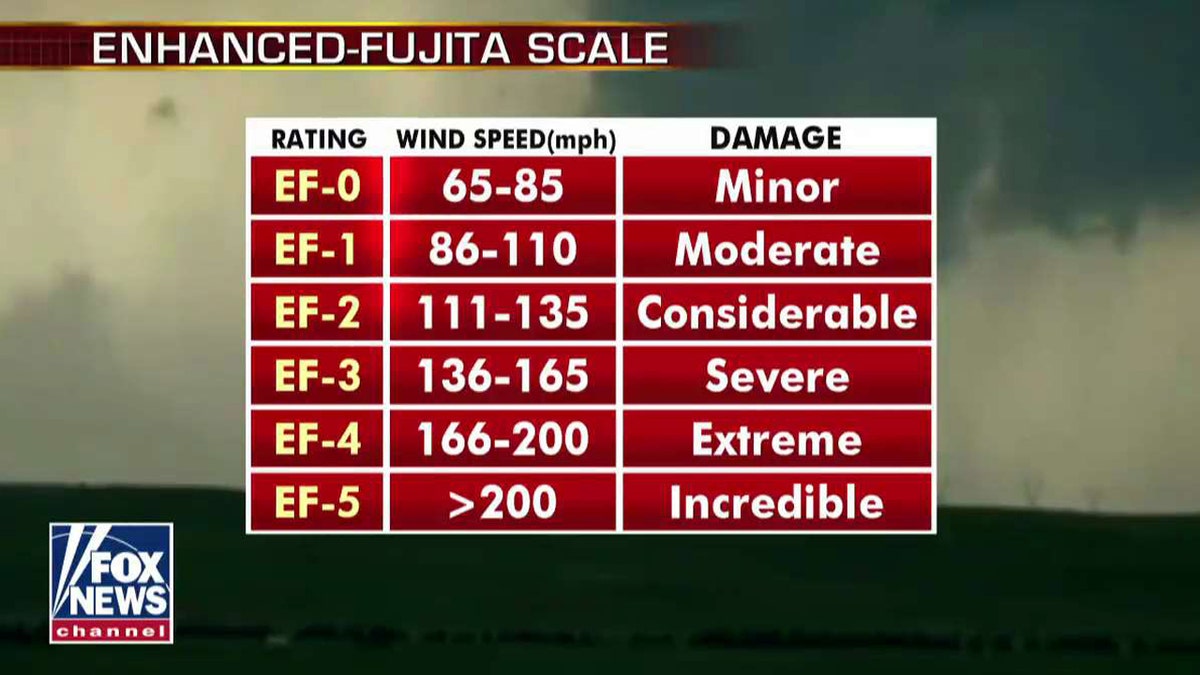
How strong tornadoes can get. (Fox News)
After a tornado is over, stay indoors until it is safe to come out.
"Check for injured or trapped people without putting yourself in danger,” Dean said.
Be on the lookout for any downed power lines and use a flashlight to inspect your home, Dean added. (To find out what else you should do before, during and after a tornado, you can read more here).
“Severe weather is not something to take lightly. I think too often we do; there are many misconceptions about the accuracy of forecasting, but we’ve come a long way,” Basara said. “It’s important to take that information seriously and heed the warnings.”
Fox News’ Janice Dean, Travis Fedschun, and The Associated Press contributed to this report.

